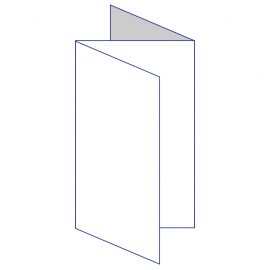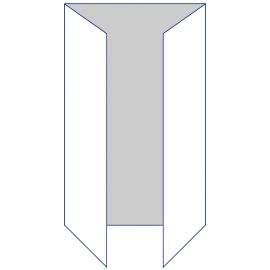Paper
Paper Sizes
A3 – 420 x 297mm
A4 – 297 x 210mm
A5 – 210 x 148mm
A6 – 148 x 105mm
SRA1 – 640 x 900mm
SRA2 – 450 x 640mm
SRA3 – 450 x 320mm
SRA4 – 225 x 320m
Envelope Sizes
C3 – 324 x 458mm
C4 – 229 x 324mm
C5 – 162 x 229mm
C6 – 114 x 162mm
DL – 110 x 220mm
Paper Types
Uncoated Paper
Paper that has been manufactured without the use of coating materials. This means that the paper texture is open and will absorb ink and give a natural feel and texture.
Gloss Paper
Paper with a gloss finish, usually used for higher quality printing and for maximum impact. Gloss paper works well with print that is image heavy as it makes the images have a sharper appearance
Silk Paper
A silk paper is good for copy with a lot of text because the low gloss makes it easier to read.
Recycled Paper
Paper that has some percentage of its content made up of recycled paper products. Recycled paper is available in gloss, matt or uncoated. FSC Paper FSC is an international, non-governmental organisation dedicated to promoting responsible management of the world’s forests. They are a global organisation with national working groups in more than 50 countries. FSC paper comes from well managed, sustainable forests and is available in gloss, matt or uncoated. By using FSC sourced paper you are helping to support responsible forestry and paper manufacture, both in the UK and abroad. This helps to protect both the environment and fight illegal logging in some of the world’s most environmentally delicate areas. To find out more about FSC visit www.fsc-uk.org.
Binding Types
Saddle stitching
A printed document is saddle stitched by stapling its sheets at the fold of the spine, over a mechanical ‘saddle’. Saddled stitching is used for thin magazines, brochures and journals. Thicker printed documents often have to be perfect bound.
Perfect Binding
Perfect binding is the process of binding sheets of a document by roughing the edges at the spine and bonding them with glue to an external cover. This technique is used for documents that are too thick to saddle stitch or used when a premium feeling end result is required. PUR gluing is also available and has a stronger bonding than Perfect binding.
Spiral Binding
Book binding that consists of a spiral wire or plastic that is wound through holes, also referred to as coil binding.
Wiro / Comb Binding
Plastic combs are another type of binding that allow for the addition or removal of pages from a book. The system involves punching rectangular holes into pages which then slide over the fingers of the plastic comb. The plastic combs allow the book to lie flat when it is open, but the book cannot be folded completely over.
Common Paper Folds
Folding
The process of bending printed sheets in a specific area so the sheets can then be formed into pamphlets, brochures, booklets or any other type of product requiring this process.

Z Fold
A paper fold represented by back and forth folds into three panels. Z folds generally have 6, 8 or 10 panels but ones with more can be created (in multiples of 2).

Roll Fold
A type of fold where the piece is folded inward at one end and then folded inward again one or more times. It is as if you are rolling the piece up.

Parallel Fold
A fold that runs parallel to another fold or a particular edge. This is a type of folding most commonly seen in items like maps.
Technical Terms
Bleed
Bleed is a term that refers to printing that goes beyond the edge of the sheet after trimming. This allows for small inconsistencies when cutting paper to their final size. Generally we require 3mm bleed, just remember this gets trimmed off so don’t design into it!
Resolution
Resolution refers to the quality of an image, the higher the resolution the better the quality. Printed material is generally created using a minimum resolution of 300dpi (dots per inch).
CMYK
Abbreviation for cyan, magenta, yellow and key (black), the four process colour inks used to create all other colours in print.
Spot Colours
A spot colour is an ‘extra’, or ‘special’ colour that is used in addition to the CMYK four colour process. Sometimes referred to as a Pantone® colour.
Imposition
The arrangement of a documents pages as they will appear on press, before cutting and binding.
Proof
A copy of the document made to reveal errors or flaws before the job is printed, and to show how a printing job is intended to appear when finished. A proof can either be in a digital format (PDF via email) or a hard copy (printed version).
FTP
File Transfer Protocol – A TCP/IP protocol that is commonly used for transferring files from computer to computer. This method is to send artwork files to a printer without the need to send out artwork on disc.
Die Cut
Die cutting is the process whereby shapes are cut out of paper, or other substrates. Designers will generally have to specify a cutting grid, in their page layout or vector drawing program that the printer will use as a guide for making the Die.
Laminate
A transparent coating applied to printed sheets to give either a shiny (gloss) or neutral (matt) finish. Usually used on the outer covers of brochures or heavy, single sheet, printed materials. Laminates help protect the document from moisture and heavy usage, as well as being aesthetically pleasing.
UV Coating (UV Varnish)
A UV varnish is a shiny coating that is applied to the printed sheet and fixed with an ultraviolet light. It can be used to cover the complete sheet of paper, or just applied to areas of the printed sheet, such as photographs – in which case it might be referred to as a spot varnish or spot UV varnish.
Encapsulate
Encapsulation protects documents from rough treatment and holds fragile items together. It consists of enveloping a document between two clear pieces of polyester. The edges of the polyester are then sealed to form a lip that helps prevent water or moisture entering the item. It is available in either gloss or matt versions.
